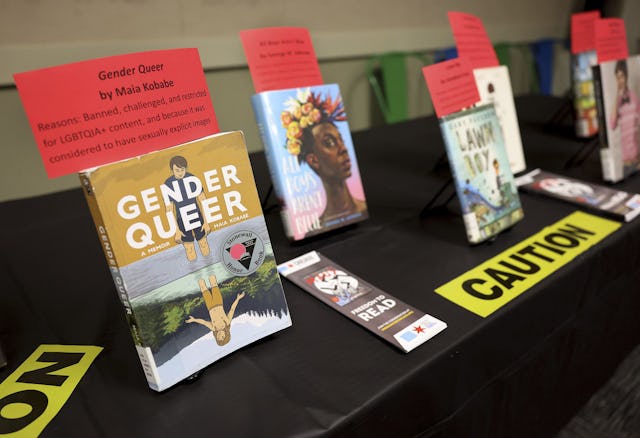American Library Association Shares The 10 Most Challenged Books Of 2024
No one who has been paying attention is surprised...

Every year, the American Library Association (ALA) releases its “State of America’s Libraries” report, highlighting the accomplishments and challenges facing these invaluable community resources.
A snapshot of 2024 examined, among other trends, the issue of censorship in public and school libraries, and shared the 10 most banned books of 2024. ALA also offers insight into who is behind these censorship attempts and why.
The report begins, in part, with a grim acknowledgement: on March 14, Donald Trump issued an executive order to eliminate the Institute of Museum and Library Services (IMLS), the only federal agency dedicated solely to funding libraries. While Trump does not have the power to dismantle IMLS whole cloth, the organization has been effectively gutted until or unless Congress steps in to counter Trump’s dictate. With a Republican majority in both the House and the Senate, this seems unlikely.
“Library services throughout the U.S. are in jeopardy because of this action,” writes Leslie Burger, interim executive director of the ALA.
These cuts would never have come at a good time, but as the ALA notes, 2024 marked a year in which libraries served as important hubs amid national disasters, such as the California wildfires and Hurricane Helene, providing displaced persons with internet, shelter, and information. The scale of these climate disasters do not show any signs of abating in 2025 and beyond.
The report also noted ongoing efforts to censor, ban, or otherwise make certain titles inaccessible to the general public, often in the name of protecting children. The good news? Fewer titles were targeted fewer times in 2024 (4,190 titles over 821 attempts) than in 2023 (4,240 titles over 1,247). The bad news, of course, is that nearly 4,200 books were challenged: the third-highest number of book challenges recorded by the ALA since it began documenting library censorship in 1990. From 2001 to 2020, an average of 46 titles were challenged
It is also telling to see who is challenging access to materials.
“These demands to remove and restrict books and other library materials are not the result of any grassroots or popular sentiment,” writes Deborah Caldwell-Stone, director of ALA’s Office for Intellectual Freedom. “The majority of book censorship attempts are now originating from well-funded, organized groups and movements long dedicated to curbing access to information and ideas.”
Indeed, approximately three-quarters of these challenges — nearly 72% — initiate from pressure groups, elected officials, board members, and administrators. To put this in perspective, between 2001 and 2020, these same constituencies only brought 2.8% of such challenges, which averaged approximately 46 titles a year.
Parents only accounted for 16% of demands to censor books. Only 5% of reported book challenges came from individual library users.
For those who have been following dedicated censorship efforts, it should come as no surprise that, once again, the majority of books targeted — 71.6% — were by and/or about LGBTQ+ and racial/ethnic minorities.
The most challenged books of 2024 were...
- All Boys Aren’t Blue: A Memoir-Manifesto by George M. Johnson
- Gender Queer: A Memoir by Maia Kobabe
- The Bluest Eye by Toni Morrison (tied with...)
- The Perks of Being a Wallflower by Stephen Chbosky
- Tricks by Ellen Hopkins
- Looking for Alaska by John Green (tied with...)
- Me and Earl and the Dying Girl by Jesse Andrews
- Crank by Ellen Hopkins (tied with...)
- Sold by Patricia McCormick
- Flamer by Mike Curato
“We are witnessing an effort to eliminate entire genres and categories of books from library shelves in pursuit of a larger goal of placing politics and religion over the well-being and education of young people and everyone’s right to access and find information in our libraries,” Caldwell-Stone continues. “It is impacting our youth and our communities.”
The full report is available on the ALA website.